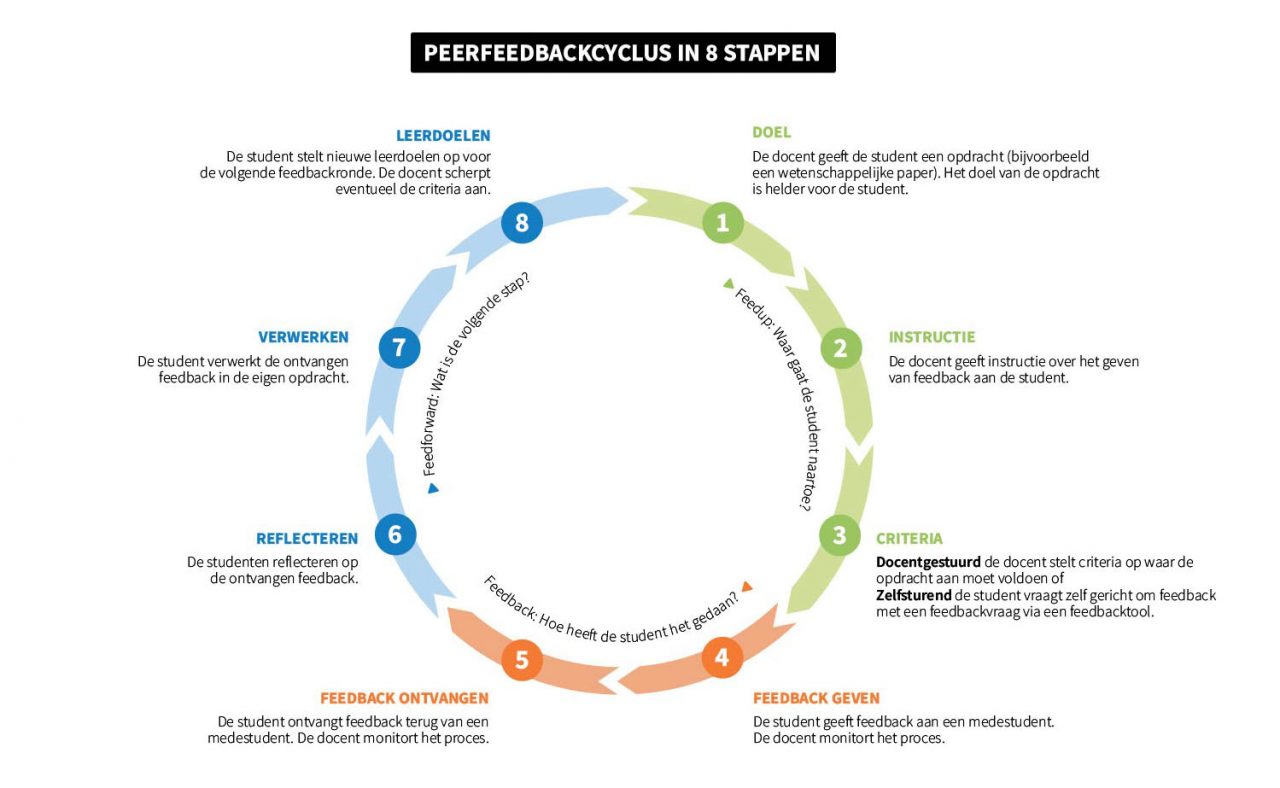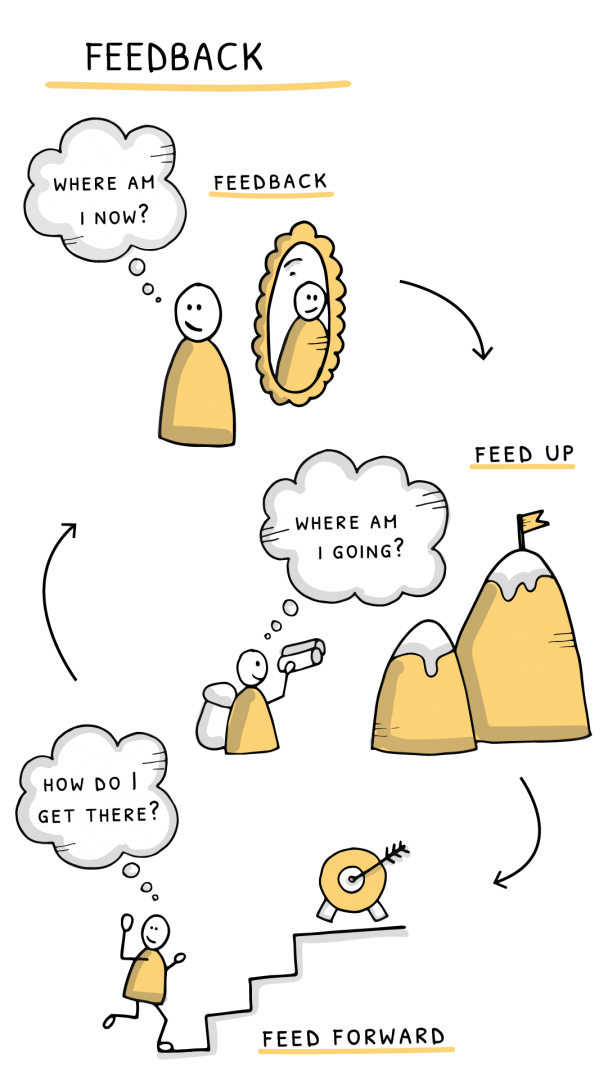Feedback
If you want students to develop continuously, feed‘back’ is essential! It helps them see if they are still on track and how best to carry on. How do you give effective feedback or feed forward? And how do you ensure that students provide each other with feedback?
Why?
Feedback strongly influences students’ learning process and achievements. Unfortunately, this can be negative as well as positive: consider the dent in your self-confidence when you receive unpleasant feedback. The kind of feedback given, and the way it is given, impacts its effectiveness and the student’s willingness to take it to heart. Just giving a mark or an assessment such as ‘Good’ or ‘Bad’ is not feedback, but an evaluation. It does not tell students what they can improve.
Giving good feedback is not always easy and can also be time consuming. All the same, it plays an essential role in the learning process. After all, as long as we are unaware that we are doing something wrong, we will not take steps to change anything.
What?
What do we want to achieve with feedback? According to Hattie and Timperley (2007), ‘The goal of feedback is to reduce the discrepancy between current and desired performance levels.’ (Hattie & Timperley, 2007)
The term feed‘back’ is therefore misleading, as you do not just look back but also ahead. You need information about how you can improve and what to change.
Effective feedback answers the following three questions:
- Where am I going/what are the goals? (Feed up)
- Where am I now? (Feedback)
- How do I get there? (Feed forward)
With all three types, you give your students guidelines to make progress. Feedback is often seen as the end station, given after a summative test. However, interim formative feedback has a far greater impact on the learning process! It motivates students and allows them to learn in a more focused way.
How?
Good feedback is affirming, critical and constructive. Although it does not always have to be formulated in positive terms, the intention is not, of course, to discourage students! The learning process benefits from identifying what students have already learned (affirming), what they have not yet learned (critical) and which skills they can build on (constructive).
Feed up
When students start on an assignment, they should be clear about what is expected of them and what criteria for success there are. This gives them guidelines for what to do. Clear learning objectives and expectations contribute to students’ motivation and make them feel more secure. It also saves you a lot of time when marking, avoiding the constant need to let students know that x, y or z was not the intention of the assignment. The quality of submitted work will also improve.
An assessment tool such as a rubric can clarify the expectations and focus of the assessment. In this way, the rubric also helps you, the lecturer, give clear and targeted feedback!
Feedback
Feedback can improve learning, provided that clear goals are set in advance AND the feedback actually addresses whether or not those goals were achieved. If, for example, the goal of an assignment is ‘to create atmosphere in a story’ and the feedback only discusses spelling and word count, this does not help achieve the learning objective. The answer to the question ‘where am I?’ informs students about achieving a goal or standard, performing a task and having been successful or unsuccessful.
Feed forward
Feed forward is the opposite of feedback. Rather than assessing someone’s past performance, it looks at the person’s future development. In the following example, a student has written an essay. Feedback is given after submission of the essay and discusses what went well and what did not. Feed forward involves evaluating a draft, asking questions and giving the student ideas on how to improve the piece. Good feed forward shows students their opportunities for growth. Instead of only commenting that they are doing well, you challenge them to push their boundaries. Feed forward is formulated positively. When students are clear about how they can be more successful, this increases their chance of success – both when completing an individual assignment and down the line in their professional career.
Peerfeedback
You may not have time to give extensive interim feedback to all students. One solution could be to have students give each other peer feedback. Scientific research shows that students are more actively involved in the learning process when peer feedback is given, as they take a more critical look at the other’s work. Both the person giving and the person receiving peer feedback deepen their learning in this way. By comparing the work to the assessment criteria and to their own work, students get an insight into how they can improve their work.
Peer feedback is not something that just casually happens in a class. It is more effective when following a number of steps, such as in the peer feedback cycle (see the illustration). It should be carried out well in order to maximise its benefit. Explain to students how to give each other feedback, and discuss social safety as well.
Students can use FeedbackFruits in Brightspace to easily give each other feedback. When using tools it is always important to give clear instructions how the tool works and where students can find more information should they need to troubleshoot. Additionally, always communicate clear deadlines!

Tips
How do you get students to read feedback?
- Share the ‘Making effective use of Feedback’ guide with your students.
- Make clear in lectures how feedback helps students work towards achieving a specific goal.
- Rather than giving the mark for an assignment immediately, wait until the feedback has been read.
- Be as specific as possible!
- Provide the feedback as soon as possible once an assignment has been submitted.
- Use various formats for conveying feedback, such as text, audio, video or a personal approach. There are convenient functionalities for this in FeedbackFruits & Brightspace!

